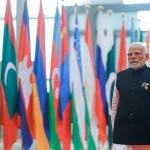Homogenization and standardization of the heritage makes it imperative to be prepared to accept that politics of cultural heritage identity will emerge as the critical issue.Heritage tourism has the tendency to act as the decisive tool in the international diplomacy to address the issues of cultural interchange and freeze the conflicts; when other tools have failed. It must be understood that heritage and its core culture are not just the representatives of the past but the keys to future construction. The presentation of the heritage to the outside world is important for the community as it presents itself to the outsiders and it basically concerns the future. Many cross-cultural ethnographic cases have brought this aspect of heritage to the fore. It represents the political set up and condition of the power within the community and society. It can’t be denied that power and politics has been a key element in devising the cultural moorings and its subsequent development. Diversity is inherent to the heritage and culture. Unified representation may not go well with some members of the community .it has an impact on the community negatively in both socio-political and economic domains, it hampers the spirit of cohesiveness and this has been noticed by the marketers and professionals while devising marketing and conservation studies. The need is to accommodate the diverse views and shun hegemony when it comes to showcasing heritage and gaining benefits from tourism. It cannot be denied that economic prosperity is the main thrust of the heritage tourism activity. As development of heritage sites is not a stagnant issue. A monument once restored to a certain time frame in terms of its glory needs sustainability and ways and means to bear the costs of its maintenance. The heritage management agencies are the facilitators and tourism professionals and the marketers who bring the tourist gaze to the asset. It is the involvement of the local community that is the main stakeholder. As it is the part of their continuity, they are direct inheritors and descendants of this heritage in terms of being the primary stakeholders. The involvement of the locals in the heritage tourism serves two primary purposes. One they act the ambassadors and interpreters of the living heritage and two, they are the direct beneficiaries of the economic benefits in terms of employability. Moreover, UNESCO has devised the strategy to uphold the economic rights of the people and at the same time made it the inherent tool to preserve the intangible heritage for the posterity as the living tradition. It has designated it as traditional, contemporary and living at the same time. It has given it an inclusive paradigm having the elements of representative community-based identity. It encourages the artisans and makes them confident to pursue the traditions as the lucrative modes of earning and at the same time being proud of continuing the tradition that has given them identity. So preservation of heritage is implemented by keeping it in continuity with community involvement and technical support based on international guidelines. Younger generation becomes the predominant representative of the heritage in this case as they gain employment and at the same time carry forward the legacy that has shaped their community goals and moorings as the people having their identity among the multitude of other identities. It has the element of economic self-sufficiency and entrepreneurship inherent in its mechanism. This strategy has acted as a blessing in restoring the community traditions of the indigenous communities having unique heritage. This strategy enhances the interaction of the community and its heritage with the diverse people in terms of heritage tourism; who spread the good word of mouth about the heritage when they move in other social spaces. It is a soft tool to preserve the cultural heritage by interaction and awareness. The issue that emerges from this discussion is that there is a need to use a substantial income acquired from heritage tourism activities for safeguarding the heritage at various levels of conservation and restoration. That is why critical issue of division of labour and hence division of profit from the economic activity of heritage tourism has emerged as a bone of contention at many times while pursuing the heritage tourism.
Policy Issues in Tourism & Heritage

Sign Up For Daily Newsletter
Be keep up! Get the latest breaking news delivered straight to your inbox.
By signing up, you agree to our Terms of Use and acknowledge the data practices in our Privacy Policy. You may unsubscribe at any time.
Leave a Comment Leave a Comment






